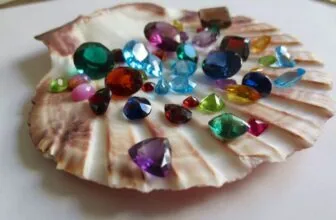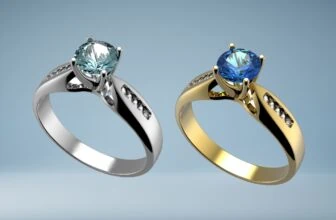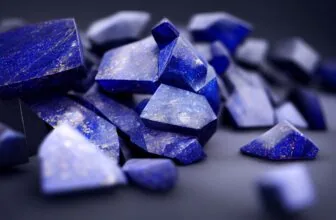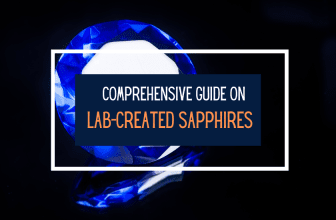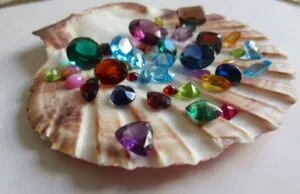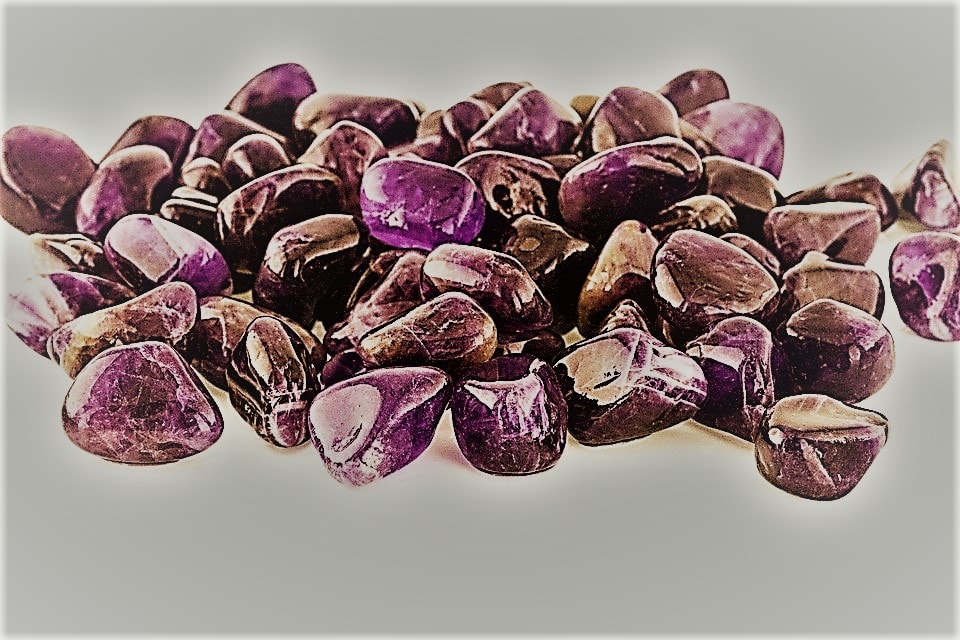
Table of Contents
Lepidolite, known for its lithium content, stands out for its calming effects and beautiful colors like pink, purple, and lilac. More than just a pretty gemstone, it helps bring peace and balance.
Let’s explore Lepidolite’s journey from its formation in the earth to its use in emotional healing, giving you a full picture of this unique and fascinating mineral.
What is Lepidolite?
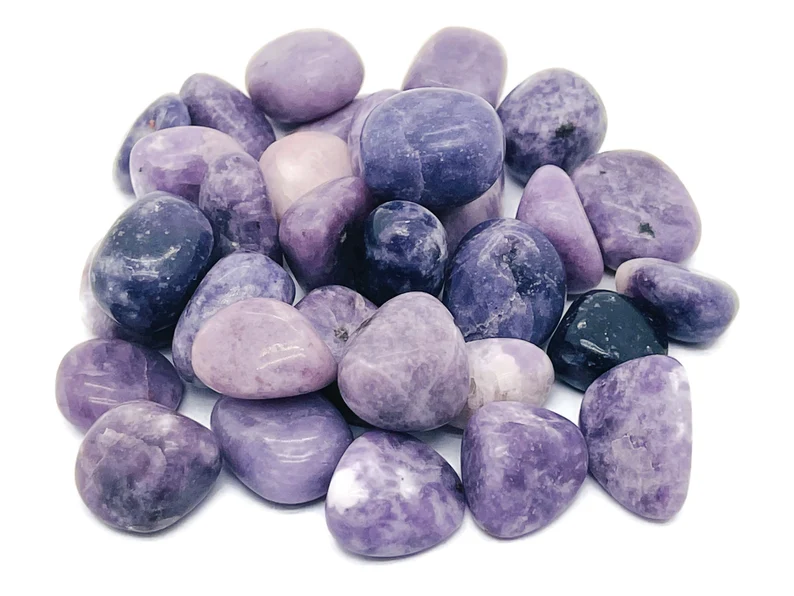
Lepidolite, a gemstone rich in lithium, stands out for its unique look and scaly texture, which comes from lithium-rich mica. Its name, ‘Lepidolite’, from the Greek word for ‘scale’, reflects this appearance. The mineral shows a color range from pink to deep lilac, with a shiny surface.
As a phyllosilicate mineral in the mica group, Lepidolite forms in granite and pegmatite rocks, often alongside quartz and feldspar. It’s mainly found in Brazil, Russia, Africa, and the USA. Lepidolite’s composition includes lithium, aluminum, and potassium, making it one of the few minerals with a notable lithium amount. This composition is why many believe it has calming and soothing effects.
Lepidolite is quite soft, with a Mohs hardness of 2.5 to 3, so it needs careful handling, especially in jewelry. Despite this softness, it remains popular for its beauty and is commonly used in decorative items and jewelry, offering a soft, elegant look with its light colors and shimmer.
Lepidolite in Jewelry
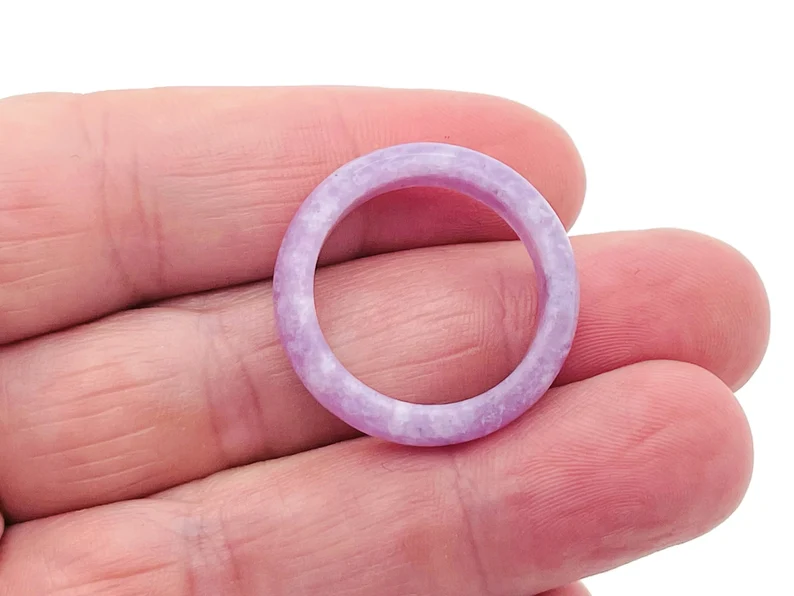
Lepidolite jewelry, notable for its lilac to pink shades and shine, stands out in the gemstone market. This stone from the mica group is rich in lithium, aluminum, and potassium, giving it unique beauty and reputed healing powers. People often choose lepidolite jewelry for its calming effect, making it popular in crystal healing and meditation.
But lepidolite is relatively soft, scoring 2.5 to 3 on the Mohs hardness scale. It requires careful handling and isn’t ideal for everyday wear like rings or bracelets, which can easily get damaged. It suits pendants, earrings, and brooches better as they are less exposed to bumps.
In design, lepidolite jewelry typically shows off the stone’s natural color with a polished finish. Sometimes it’s shaped into smooth curves (cabochons) or even cut with facets for different styles. It pairs well with various metals, from gold to silver, fitting both classic and modern looks. This adaptability, along with its soft colors, makes lepidolite a favorite choice for various jewelry types.
Lepidolite jewelry offers both visual beauty and a feeling of calm, making it a special addition to any collection for those who value elegance and tranquility.
Lepidolite Color
Lepidolite minerals are typically known for their gorgeous color which ranges from light pink to dark purple. They can also be colorless, grey, blue, or yellow, however, with those variations are less valued among jewelers and craftspeople.
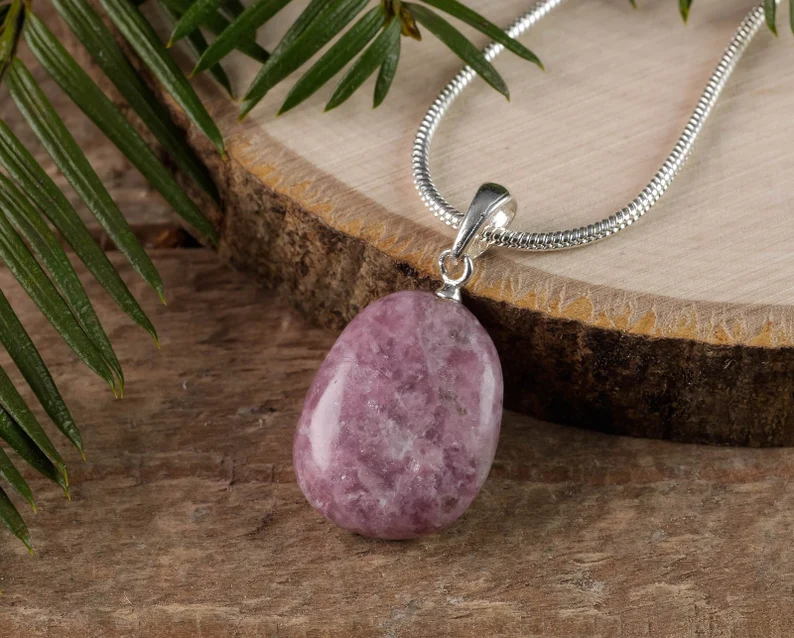
However, the only reason why the pink-to-purple lepidolites are more sought-after is that they typically make for more beautiful pieces of jewelry or ornamentation. It’s more a matter of preference than value or availability.
Lepidolite Clarity
Lepidolite ranges from slightly see-through to mostly opaque, which is an important feature of its look. Unlike other gemstones where clearness is crucial, lepidolite’s charm often comes from its natural, somewhat cloudy appearance.
It usually has a shiny, pearly quality, and its typical pink to lilac colors make it stand out. Lepidolite often has small inclusions, like mica flakes or bits of other minerals, which usually enhance its beauty by adding uniqueness and depth.
So, even though lepidolite doesn’t have the clear transparency of some other gems, its subtle glow and rich colors make it attractive and valued.
Lepidolite Cut
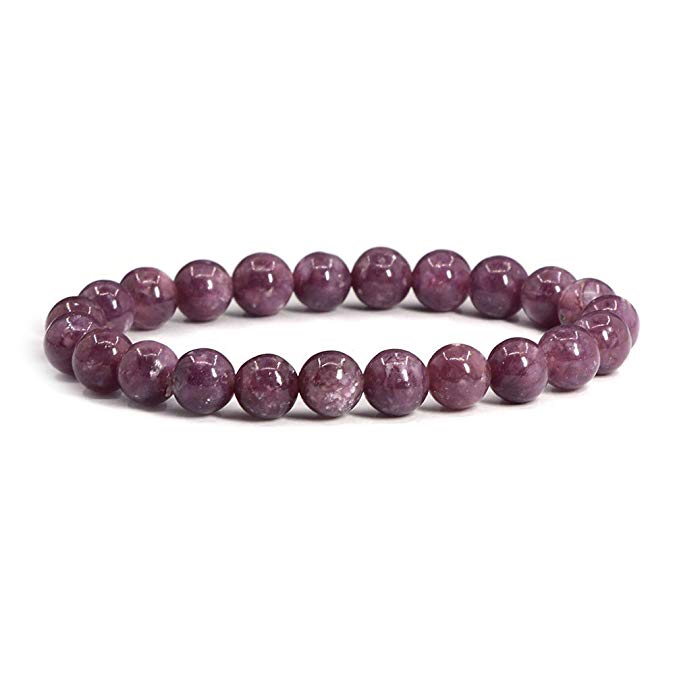
Lepidolite is almost never cut in facets, mainly because the hardness within the crystal often varies which makes it very tricky to facet the stone. Other factors to consider are that the cleavage of the lepidolite is often near perfect, which means faceting can result in the stone breaking along its cleavage lines. However, you’ll sometimes find faceted lepidolite, typically with long, open facets.
In general, lepidolite minerals are usually cut into cabochons or beads, as well as in various fancy shapes for ornamentation. They are also drilled, tumbled, or cut into spheres.
Lepidolite Carat Sizes
Lepidolite comes in varying sizes, but large sizes are still affordable. As with most other minerals, carat weight and size aren’t often talked about in relation to lepidolite. That’s because, like most other colored stones, lepidolite has a varying carat-to-size ratio.
This means that smaller pieces of lepidolite can sometimes have larger carat weight while other times larger lepidolite minerals can have a very light carat weight. That’s why it’s important to always choose colored stones based on their visual size and appearance rather than their carat weight.
Origin and History of Lepidolite
Lepidolite, known for its lithium content, was first discovered in the 18th century. Its name comes from the Greek word “lepidos,” meaning “scale,” describing its scaly look due to lithium-rich mica.
Initially valued for lithium, it was used in making glass and ceramics, and later in medicine for mood disorders. Lepidolite is mined in various places like Brazil, Russia, and Africa, each offering different types of this mineral.
Over time, it has become popular in crystal healing for its calming effects. Its soft pink and lilac colors, along with a gentle shimmer, also make it a popular choice in jewelry and decorative items, admired for both its looks and its soothing qualities.
Other Uses for Lepidolite
Apart from jewelry, lepidolite serves important roles in both industry and therapy. As a key source of lithium, it’s crucial in making batteries for electric vehicles and electronic gadgets. This lithium is also vital in producing durable, high-quality glass and ceramics that can withstand high temperatures.
In mental health treatment, lithium from lepidolite is essential for managing conditions like bipolar disorder, helping to stabilize mood swings.
In the world of crystal healing and alternative therapies, many people value lepidolite for its calming effects. It’s commonly used in practices like crystal healing, meditation, and relaxation exercises, believed to aid in emotional balance, reduce anxiety, and foster peace and tranquility.
Cleaning and Caring for Lepidolite Jewelry
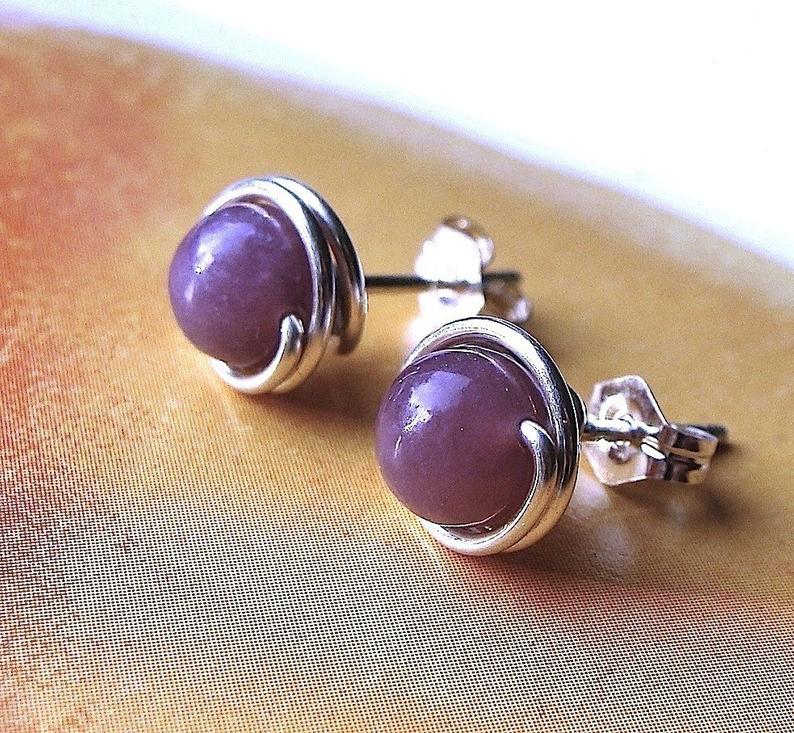
Lepidolite minerals are quite soft, standing between 2.5 and 4 points on the Mohs scale. This is very soft like amber, jet, and pearl meaning that lepidolite can easily get scratched, damaged or even fractured.
Never store lepidolite with other jewelry, as they can scratch the stones. If you have to store lepidolite jewelry next to other gemstones and jewelry, wrap it in a piece of cloth for extra protection.
Take off any lepidolite jewelry when engaging in vigorous activity such as gardening, sport, and swimming as the stone could get damaged.
As for cleaning lepidolite jewelry, this mineral is very vulnerable to high temperatures and strong, toxic household chemicals. Chemicals such as bleach and sulphuric acid can drastically affect the color or overall composition of any lepidolite piece. Instead, cleaning this mineral with warm water and a mild soap is the best course of action. Never use harsh, abrasive materials to clean lepidolite but instead use a soft cloth or brush.
Are There Enhanced or Imitation Lepidolite Gemstones?
Enhanced or imitation lepidolite gemstones are quite rare in the market. Lepidolite is usually valued for its natural look, which includes soft colors and a pearly shine. The mineral’s own features, like its lithium content and special colors, make it less likely to be enhanced or imitated.
Still, buyers should be careful, as the gemstone market might have synthetic or artificially colored stones labeled as natural. It’s best to buy lepidolite from trustworthy sellers who can prove it’s real. If there are any enhanced or imitation versions, they usually don’t match the true mineral’s unique texture and colors.
Most people who love gems and collect them prefer the natural beauty of real lepidolite.
Lepidolite Meaning and Symbolism
Lepidolite, known for its lilac and pink colors, symbolizes tranquility and balance. This lithium-rich gemstone is linked to emotional healing and stress relief. People believe it calms the mind, reduces anxiety, and promotes restful sleep. It’s thought to help overcome emotional dependencies, boosting independence and self-love.
Symbolically, lepidolite stands for change and personal growth. It supports people during transitions, helping them let go of old habits and thoughts. This marks lepidolite as a symbol of renewal and progress. Its colors are connected to the heart and crown chakras, indicating its role in fostering love, compassion, and spiritual connection.
Lepidolite is also seen as a stone that brings harmony to relationships and encourages open, honest communication. It helps people maintain a positive outlook, focusing on the joyful parts of life. Overall, lepidolite’s meanings and symbols focus on emotional healing, balance, and encouraging a positive and transformative journey in life.
Where to Buy Lepidolite
Lepidolite is easy to find at most retailers specializing in gemstones and crystals. In general, lepidolite jewelry ranges from a few dollars to a couple of hundred.
- Etsy is known for unique, handmade, or vintage items. If you’re looking for lepidolite on Etsy, you’ll find a variety of products from individual sellers and craftsmen. These include handmade lepidolite jewelry, raw stones, and detailed pieces. You can also directly talk to sellers about custom requests or questions regarding the lepidolite’s source and quality.
- Amazon has a wider and more varied range of lepidolite items from different sellers. Here, you can find lepidolite in forms like jewelry, unprocessed stones, or polished gems. Amazon is user-friendly, with customer reviews and fast shipping. But, due to the large number of products, you might need to spend extra time checking the authenticity and quality of the lepidolite.
Wrapping Up
Lepidolite is a unique gemstone known for its beauty and calming presence. Its soothing colors and high lithium content make it a special addition to any collection. Valued for both its looks and relaxing qualities, Lepidolite perfectly blends nature’s beauty with a comforting feel.


